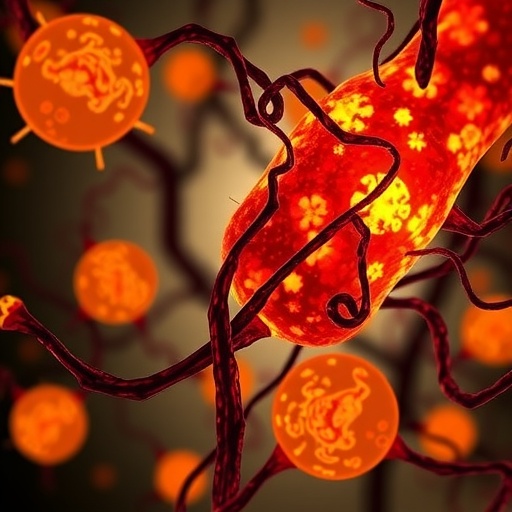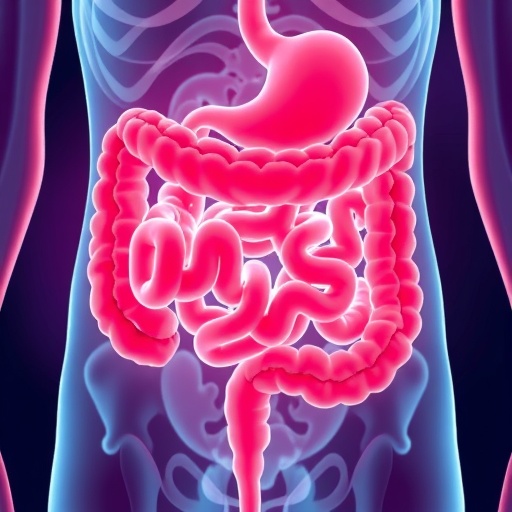
Credit: Florida Atlantic University
Human red blood cells (RBCs) are extremely resilient and have the capacity to undergo cellular deformation as they navigate across various micro-vessels and capillaries. Over their 120-day normal lifespan, RBCs must undergo significant cyclic deformation through large elastic stretching and relaxation. Pathological deformations in RBCs are associated with various diseases such as malaria, sickle cell anemia, diabetes, myocardial infarction and various hereditary disorders.
Mechanical fatigue that arises from cyclic straining in RBCs also is a key factor in the degradation of engineered materials and structures. This fatigue can damage and fracture natural biomaterials like bone as well as synthetic biomaterials used in implant devices such as dental implants and synthetic heart valves. However, the mechanisms responsible for the degradation of circulating biological cells due to mechanical fatigue are not well-understood, especially in human RBCs. Measuring the complex and clinically relevant mechanical fatigue behavior of biological cells in health and disease has challenged scientists for decades.
Researchers from Florida Atlantic University’s College of Engineering and Computer Science, in collaboration with Massachusetts Institute of Technology, and the Nanyang Technological University in Singapore, have developed a novel way to measure how mechanical fatigue affects biological cells. Furthermore, they have established the important role of this effect in influencing physical properties of biological cells such as RBCs.
Results of the study, published in the Proceedings of the National Academy of Sciences, also provide insights into the accumulated membrane damage during blood circulation, paving the way for further investigations of the eventual failure of RBCs and the mechanism that causes their destruction in various blood disorder pathologies such as sickle cell anemia.
This new technique assesses the mechanical integrity and fatigue behavior of RBCs using a general microfluidics method that incorporates amplitude-modulated electro-deformation. It induces static and cyclic mechanical deformation of RBCs and measures systematic changes in morphological and biomechanical characteristics of healthy human RBCs and their membrane mechanical properties. This method also is capable of subjecting cells to static loads for prolonged periods of time or to large numbers of controlled mechanical fatigue cycles.
“The fatigue testing platform that we have developed features multiple and distinctive advantages for the quantitative characterization of mechanical fatigue behavior of single biological cells,” said Sarah Du, Ph.D., a senior author and an associate professor in FAU’s Department of Ocean and Mechanical Engineering. “The strengths of our method lie in its simplicity and flexibility to impose controlled mechanical loads at selected frequencies and waveforms, and its capability to probe a number of single cells over thousands of fatigue cycles.”
The researchers wanted to better understand the effect of fluctuations in stresses or deformation of a healthy biological cell on its mechanical and physical characteristics, structural integrity and performance. They also wanted to identify the function of factors such as the maximum intensity, amplitude and rate of strain, frequency of cyclic deformation, and number of cycles as well as whether or not this effect is specific to cyclic variations in deformation.
Results from the study further indicate that loss of deformability of RBCs during cyclic deformation is much faster than that under static deformation at same maximum load over same accumulated loading time. Such fatigue-induced deformability loss is more pronounced at higher amplitudes of cyclic deformation.
“This cutting-edge technique developed by Professor Du and her group will be a game changer, which will help scientists to better understand the biological functions of red blood cells and other cells that impact many aspects of human health,” said Stella Batalama, Ph.D., dean of FAU’s College of Engineering and Computer Science. “In addition, this unique method has important applications for mechanical fatigue studies in conjunction with other microenvironments related to health and materials engineering.”
###
The lead author of the study, Yuhao Qiang, and co-author Jiu Liu, are Ph.D. research assistants in FAU’s Department of Ocean and Mechanical Engineering; Ming Dao, Ph.D., Massachusetts Institute of Technology and Subra Suresh, Ph.D., Nanyang Technological University also are two senior authors of the study.
This research was supported by the National Science Foundation (No. 1635312 and No. 1464102) awarded to Du, the National Institutes of Health (U01HL114476) awarded to Dao, and a Distinguished University Professorship from Nanyang Technological University in Singapore, awarded to Suresh.
About FAU’s College of Engineering and Computer Science:
Florida Atlantic University’s College of Engineering and Computer Science is committed to providing accessible and responsive programs of education and research recognized nationally for their high quality. Course offerings are presented on-campus, off-campus, and through distance learning in bioengineering, civil engineering, computer engineering, computer science, electrical engineering, environmental engineering, geomatics engineering, mechanical engineering and ocean engineering. For more information about the college, please visit eng.fau.edu.
About Florida Atlantic University:
Florida Atlantic University, established in 1961, officially opened its doors in 1964 as the fifth public university in Florida. Today, the University, with an annual economic impact of $6.3 billion, serves more than 30,000 undergraduate and graduate students at sites throughout its six-county service region in southeast Florida. FAU’s world-class teaching and research faculty serves students through 10 colleges: the Dorothy F. Schmidt College of Arts and Letters, the College of Business, the College for Design and Social Inquiry, the College of Education, the College of Engineering and Computer Science, the Graduate College, the Harriet L. Wilkes Honors College, the Charles E. Schmidt College of Medicine, the Christine E. Lynn College of Nursing and the Charles E. Schmidt College of Science. FAU is ranked as a High Research Activity institution by the Carnegie Foundation for the Advancement of Teaching. The University is placing special focus on the rapid development of critical areas that form the basis of its strategic plan: Healthy aging, biotech, coastal and marine issues, neuroscience, regenerative medicine, informatics, lifespan and the environment. These areas provide opportunities for faculty and students to build upon FAU’s existing strengths in research and scholarship. For more information, visit fau.edu.
Media Contact
Gisele Galoustian
[email protected]
Related Journal Article
http://dx.




